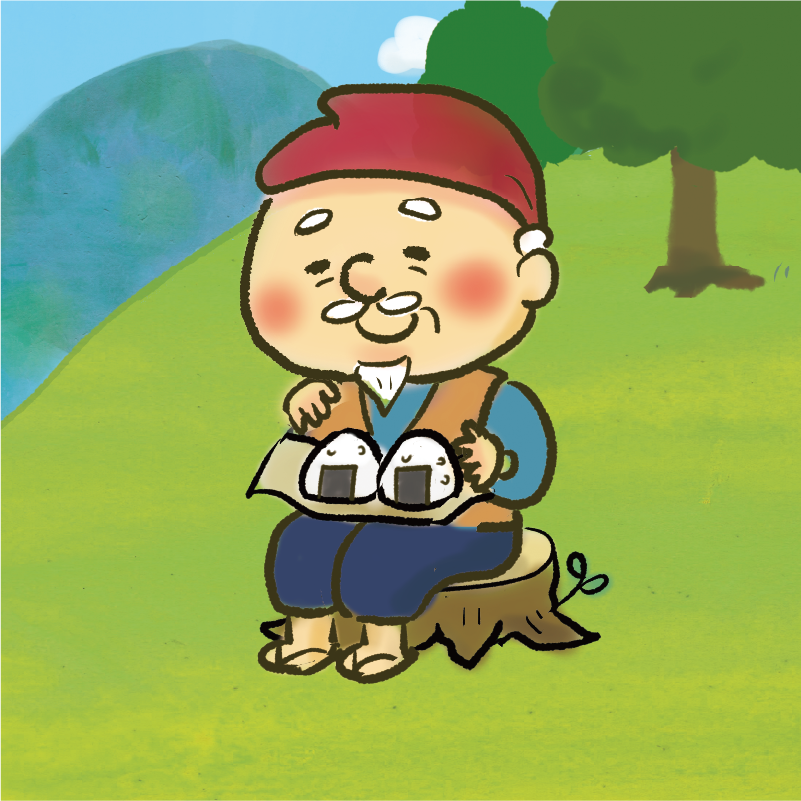
Tsuyu -Rainy Season- Flipbook and Activity
To the Teacher
Students will learn about ‘tsuyu’ – rainy season in Japan while reading the digital flipbook. This digital flipbook is created using Japanese scripts with supporting pictures to increase students understanding of the story.
Students can access the book by clicking on the cover page on the left or by using the following link.
Nihongo flipbooks. Nihongo Flipbooks – Japan Foundation, Sydney (jpf.org.au) ![]()
‘Tsuyu’ is the rainy season in Japan. It comes every year between spring and summer. ‘Tsuyu’ lasts for one or two months, so children look forward to the end of ‘tsuyu’ and the upcoming sunny days of summer. Here is a little bit about the origin of the name of ‘tsuyu’ and about rain in Japan.
1. Origin of the name of the rainy season “tsuyu”
The kanji for ‘tsuyu’ are ‘梅 ume (plum)’ and ‘雨 ame (rain)’, and was originally introduced from China. The kanji 梅雨 has two readings, one is ‘tsuyu’ and the other is ‘baiu’, which is close to the Chinese original pronunciation. There are various theories as to why the name was chosen but a well-known theory is that the word ‘ume’ was first used to mean ‘rain during the ripening period of the plum tree’.
2. Types of rain
The Japanese language has many words to describe rain. There are four seasons, and rain falls throughout the year. Therefore, since ancient times, people have been sensitive to the differences in rainfall in their daily lives and have attached sentimental names to describe the rain they have become familiar with. There are more than 400 different names for rain, such as the same type of rainfall but with different names depending on the time of year, or names derived from legends.
For example,
Strength of rain:「霧雨 (きりさめ): drizzle – very light rain falling as fine and soundless as a mist」, 「小雨 (こさめ): light rain」, 「大雨 (おおあめ) : heavy rain」, 「豪雨 (ごうう) : torrential/downpour rain」
Seasonal rain:「桜雨 (さくらあめ) : cherry blossom rain」, 「喜雨 (きう) : rain of joy – the rain that falls during summer when the sun is shining (sun shower), meaning a blessing for rice cultivation and agriculture 」, 「秋雨 (あきさめ) : autumn rain」, and 「氷雨 (ひさめ) : icy/cold rain including sleet and hail」 and so on.
3. Onomatopoeia for rain
Typical onomatopoeias for rain include “shito shito”, “potsu potsu”, “para para (flap flap)”, and “zaa zaa”. These are used differently depending on the intensity and condition of the rain.
[light rain]<「しとしと」<「ぽつぽつ」<「ぱらぱら」<「ざあざあ」< [heavy rain]
Pre-reading Activities
Teachers may ask students questions to activate prior knowledge (schema) and arouse their interest in reading the story about ‘tsuyu’. See examples below.
E.g.
1. When is your favourite season?
2. How often does it rain in your town?
3. How do you describe rainy day?
E.g.しずか (quiet)、つまらない(boring)、おちつく(calm)、きれい(pretty)、さむい(cold)、むしむしする(hot and humid)、じとじとする(clammy)、すきじゃない(don’t like it)、すき(like it), etc.
4. Is there rainy season in your town?
Comprehension Quiz (〇✕ )
Four suggested questions to check students’ understanding.
Are these statements “True (〇)” or “False (✕)”?
Q1: ‘Tsuyu’ is rainy season in Japan. (〇)
Q2: ‘Tsuyu’ comes between spring and summer. (〇)
Q3: ‘Tsuyu’ starts at the same time all over Japan. (✕ – different timing depending on the area. E.g. in Okinawa tsuyu starts earlier than in Tokyo, and Hokkaido does not have tsuyu.)
Post-reading Activities
1. Make a paper doll ‘Teruteru bouzu‘ and sing its song.
① Make ‘Teruteru bouzu’
「てるてるぼうず」is a handmade doll to which children use to pray for fine weather. Children like to make the doll and put it by the window the day before their favourite outside event happens.
There are lots of videos showing the steps to make a「てるてるぼうず」and it is very easy. One example of video is here.
Youtube: https://www.youtube.com/watch?v=PIVItcLrJig![]()
② Sing ‘Teruteru bouzu’ song
After putting teruteru bouzu up, sing this song. The whole song is quite long but many Japanese children only sing the first line. Here is how it goes.
“Teruteru bouzu teru bouzu, ashita tenkini shiteokure (Teruteru bouzu, please bring good weather tomorrow.)”
Youtube: https://www.youtube.com/watch?v=eMlguyeKek8![]()
2. Sing “Ame-furi” song and learn some onomatopoeia
YouTube: https://www.youtube.com/watch?v=O6xq62tP9HY![]()
Japanese Lyrics
あめあめ ふれふれ かあさんが じゃのめで おむかえ うれしいな *ピッチピッチ チャップチャップ ランランラン
Rainy Day (English translation)
Rainy day, rainy day, I like it. My mother will come here with my umbrella. * pitch pitch, chap chap, run run run!
*”Pitch pitch, chap chap” are onomatopoeia for sounds of splashing water, like “splishy, splishy, splashy, splashy.” The next part, “run run run” is onomatopoeia for describing a happy feeling, like “Happy I am.”)
3. Further craft Ideas
① Make a card with あじさい (hydrangea) motif collage origami
Youtube: https://www.youtube.com/watch?v=zDor5okaMtE ![]()
② Make origami jumping frogs and race them
Youtube: https://www.youtube.com/watch?v=awxwsZ9g-vg ![]()
4. Design your umbrella
Step 1: Practice colours and patterns with the PPT
Step 2: Design your own umbrella and explain its colour and pattern. (worksheet and sample)
5. Role play
WEATHER REPORTS https://classroomresources.sydney.jpf.go.jp/resources/role-play-weather-reports/ ![]()
6. Practice ‘tsuyu’ and ‘tenki’ vocabulary with cards
Resource created by Hiroko Langdon (May 2023).















